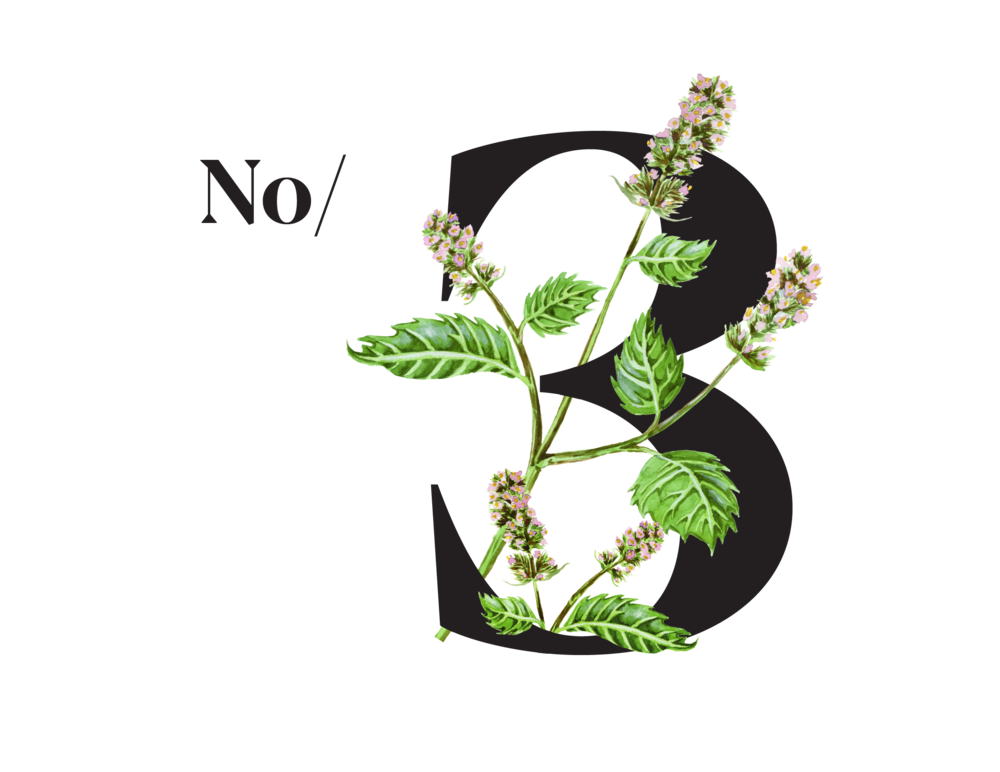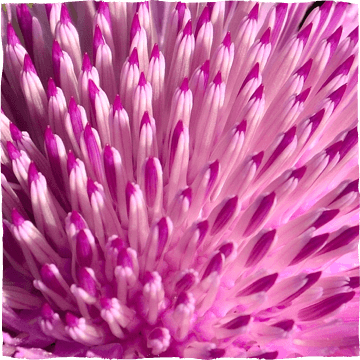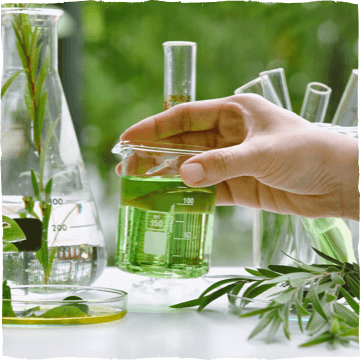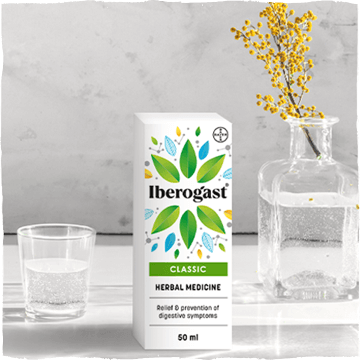Peppermint leaves (Menthae piperitae folium) – aromatic and medicinal
Peppermint is by no means a new discovery when it comes to medicinal plants. It was used already in the time of the ancient Egyptians: the remnants of peppermint leaves have been found in their graves. They are used in many areas of medicine - but especially in the treatment of gastrointestinal complaints, like soothing an upset stomach and aiding digestion. Peppermint leaves do not only possess painkilling and antispasmodic properties, they also relieve symptoms such as flatulence and have an anti-inflammatory and anti-ulcerogenic effect.
Peppermint is by no means a new discovery when it comes to medicinal plants. It was used already in the time of the ancient Egyptians: the remnants of peppermint leaves have been found in their graves.
The peppermint is not a species onto itself, but a cross hybrid between watermint and spearmint.
Peppermint can grow almost anywhere, but prefers moist soil, in shady surroundings.
Extracts of peppermint leaves do not only possess painkilling and antispasmodic properties, they also relieve symptoms such as flatulence and have an anti-inflammatory and anti-ulcerogenic effect and are able to regulate acid production.
Peppermint leaves are used in many areas of medicine –mainly for minor spasms of the gastrointestinal tract, flatulence and abdominal pain.
In addition, peppermint is used as tea for diseases of the upper respiratory tract, like coughs.
Peppermint leaves are grown for pharmaceutical processing. It is a perennial plant grown (for up to 3 years) in the USA as well as Germany. Peppermint requires damp and cool climates as well as warmer regions with plenty of humidity. Humus-rich soils, as well as loamy to sandy soils are ideal for growing peppermint. Peppermint requires plenty of soil moisture as its flat root systems make it difficult for it to absorb water. It is typically grown from stolons (pieces of root), rooted cuttings or seedlings. New cultivation areas are usually created using stolons. In order to plant stolons, peppermint requires a well-prepared plant bed with a good soil structure and water supply. The roots are planted around 10 cm deep in October.
Mechanical weed control is carried out particularly in the 1st year of growth using a hoe or harrow as the ground can be cultivated using tools until the rows of peppermint have grown too dense to do so. The use of isolated synthetic chemical pesticides is permitted and strictly regulated by the European Legislation on Plant Protection Products. However, weed infestation inevitably increases during the three years of cultivation as it becomes more difficult to work on the overgrown areas.
The optimum harvesting time is shortly before blossoming, or just after blossoming starts. The nutrients are at their most abundant during this time, particularly essential oils such as menthol. In the first year, harvesting takes place in July and September, and in the second year in June and then between August and September. The peppermint plants are harvested unchopped in dry conditions using a forage harvester and loaded onto a transport lorry. The herb is separated from its stalks so that only the leaves are dried using various drying methods. It is important to dry them gently to preserve the valuable nutrients.
Origin and further uses of peppermint
An Ancient Greek legend tells of a water nymph by the name Minthe, living by the underworld river Kokitos, who seduced the god Hades and boasted of her superiority over Persephone. In retaliation, the queen of the Underworld transformed her into the plant we now know as mint. The old Greek name hedyosmon(sweet smelling) is nowadays only used for certain varieties and has been almost universally replaced.
The peppermint is not a species onto itself, but a cross hybrid between watermint and spearmint, with a high concentration of the organic compounds menthol and menthone.
These highly aromatic compounds allow peppermint to be one of the most well know natural flavouring agents around – it is used for chewing gum, toothpaste and teas. Its soothing effects allowed it to gain notoriety as a remedy for mild headaches, skin irritations, menstrual complaints as well as digestive symptoms.
Peppermint can grow almost anywhere, but prefers moist soil, in shady surroundings. And even though you can cultivate it on your own, in a pot at home, controlling and extracting its active ingredients for achieving its medicinal benefits is not the same as preparing a tea or infusing oil. As such, it is advisable to reach for a suitably prepared herbal medicines.
If you reach out for a herbal medicine with combined ingredients, it is possible to even treat, multiple gastrointestinal symptoms simultaneously. One such highly effective and natural medicine is Iberogast®, with its nine herbal extracts, formulated specifically to target different digestive symptoms of functional gastrointestinal disorders like irritable stomach or irritable bowel and their underlying causes at the same time.
Interesting facts about peppermint leaves
Did you know that:
-
The particularly curative, famous peppermint in the 17th Century in England was created by crossing different cultivated mint varieties?
-
The peppermint as we use it does not appear in the wild?
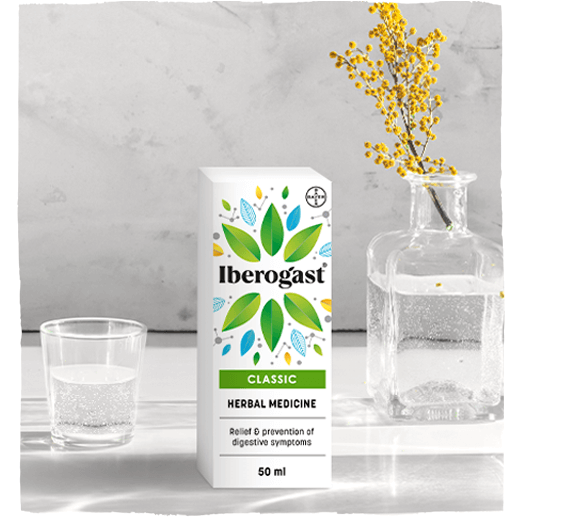
-
The different types of mint differ mainly in the concentration and composition of their precious essential oils?
-
The peppermint plant can reached a height of 30 to 70 centimetres and is recognizable by its strong, aromatic smell?
-
It flowers purple between June and August?
-
The peppermint must be transplanted every three years, to prevent it from becoming a fragrant, drug-poor mint variety?
The effect of peppermint leaves on the gastrointestinal tract
Extracts from peppermint leaves are mainly used for minor spasms of the gastrointestinal tract, flatulence and abdominal pain. They can be anti-inflammatory, counteract free radicals in the stomach and regulate acid production and also promote the production of bile. In addition, peppermint is a cure for diseases of the upper respiratory tract, like coughs.
Because of their multifaceted effect, extracts from peppermint leaves also relieve the symptoms of irritable bowel syndrome.
At a glance: This is how peppermint works in Iberogast®
The following table shows the different active contributions of peppermint in Iberogast®:
| Active benefits of peppermint leaves in the frame of irritable stomach | |
| Activation of the musculature in the lower stomach | |
| Relaxation of the musculature in the upper stomach | |
| Anti-inflammatory | |
| Regulation of acid production | |
| Protection of the mucosa |
Legend:
| High impact | |
| Medium impact | |
| Light impact |
The below video is an example only. Please localize the videos in the content packages (can be found on eDAM) and here with your local market Vimeo/YouTube links
This is a sample video only. Please replace with your own local country Vimeo/YouTube videos.
Buy Iberogast® prescription-free from your pharmacy.
Get the power of nature into your home!
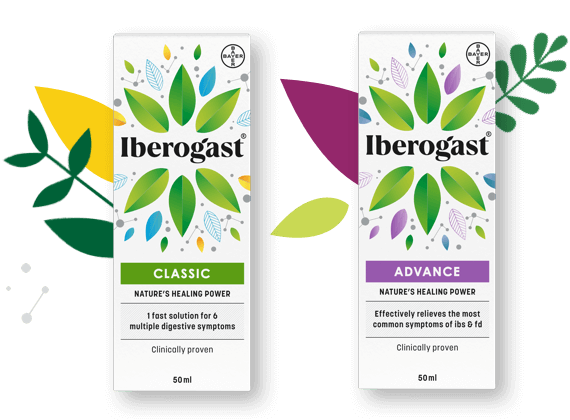
Abdel-Aziz, H., O. Kelber, G. Lorkowski and M. Storr “Evaluating the Multitarget Effects of Combinations through Multistep Clustering of Pharmacological Data: the Example of the Commercial Preparation Iberogast.” Planta Med, 2017. 83(14/15): 1130–1140.
Ammon, H. P., O. Kelber and S. N. Okpanyi “Spasmolytic and tonic effect of Iberogast (STW 5) in intestinal smooth muscle.” Phytomedicine, 2006. 13 (Suppl 5): 67–74.
Khayyal, M. T., M. A. el-Ghazaly, S. A. Kenawy, M. Seif-el-Nasr, L. G. Mahran, Y. A. Kafafi and S. N. Okpanyi “Antiulcerogenic effect of some gastrointestinally acting plant extracts and their combination.” Arzneimittelforschung, 2001. 51(7): 545–553.
Khayyal, M. T., M. Seif-El-Nasr, M. A. El-Ghazaly, S. N. Okpanyi, O. Kelber and D. Weiser “Mechanisms involved in the gastro-protective effect of STW 5 (Iberogast) and its components against ulcers and rebound acidity.” Phytomedicine, 2006. 13 (Suppl 5): 56–66.
European Medicines Agency: EMEA/HMPC/193910/2007 – “Assessment report on Mentha X piperita L., folium.” Published 4 September 2008. Available from: https://www.ema.europa.eu/documents/herbal-report/assessment-report-mentha-x-piperita-l-folium_en.pdf.
Menthae piperitae folium, ESCOP monographs 2019.
Folium Menthae Piperitae, WHO monograph 2002.
Allam, S., D. Krueger, I. E. Demir, G. Ceyhan, F. Zeller and M. Schemann “Extracts from peppermint leaves, lemon balm leaves and in particular angelica roots mimic the pro-secretory action of the herbal preparation STW 5 in the human intestine.” Phytomedicine, 2015. 22(12): 1063–1070

